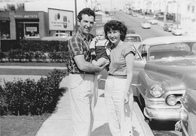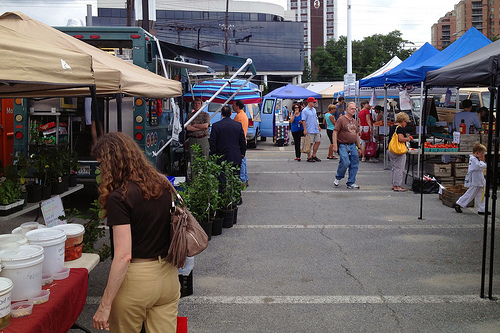White Flint can retain Baby Boomers and attract new ones

Photo by velvettangerine on Flickr.
With the kids gone, many Baby Boomers face one of two choices: age in place, or move downtown. Real estate analysts say which one they pick will have a big impact on the local housing market, but communities that can accommodate both choices can benefit either way.
Born between 1946 and 1964, Baby Boomers are the largest generation in American history after their kids, the Millennials. More older adults are moving to urban neighborhoods, trading the large houses they raised families in for smaller, more manageable homes in places where they don’t have to drive.
Meanwhile, other retirees are staying put to be closer to friends and family, but modifying their homes so they can live there as their mobility and health decline. But is there a middle ground? By creating a new urban center within an established suburban community, places like White Flint offer Boomers the lifestyle they want while remaining close to friends and family.
While Montgomery County talks a lot about attracting younger residents, White Flint is a naturally desirable place for older residents as well.
For starters, their ranks are growing. There are almost 225,000 adults between the ages of 50 and 70 living in Montgomery County, making up 23.4% of its population, compared to 18.8% in 2000. In North Bethesda (which the Census defines as the area roughly bounded by I-270, the Beltway, Rock Creek Park, Montrose Road and Twinbrook Parkway), there are 9,753 Boomers living here today, making up 23.8% of the population, compared to 20.1% in 2000.

Boomers might be drawn to urban-style amenities in White Flint, like this farmers’ market. Photo by the author.
The county’s vision for a new downtown along Rockville Pike resembles many of the urban places that retirees are currently moving to, like Arlington or Bethesda: a mix of homes, offices and shops, walkable streets, new transit options and a variety of public spaces. Being able to meet all of your daily needs within a short walk is a compelling alternative to big retirement communities that may have a lot of amenities on-site, but are practically impossible to leave without a car.
In a few years, White Flint will have many of the cultural amenities Boomers want, like a growing variety of restaurants, high-end movie theatres, and Strathmore’s live music venue at Pike + Rose. And, of course, it’s next to the Red Line and a future BRT line along Rockville Pike, allowing Boomers to travel to Rockville, Bethesda, or DC for activities there.
With some exceptions, most of the new apartments and condominiums that will be built in White Flint will be expensive, placing them out of reach for cash-strapped Millennials. But Boomers often have the savings and the income to actually afford them.

New towers rise behind 1950’s-era homes in White Flint, allowing some residents to “age in place.” Photo by the author.
Many Boomers won’t have to move anywhere to enjoy the new White Flint, because they already moved to one of the area’s surrounding suburban neighborhoods decades ago to raise a family. If they choose to “age in place,” they’ll find that their neighborhood has also evolved to meet their needs.
Much as older residents might add a first-floor bedroom for when they can’t climb the stairs, White Flint will become a place where they can walk to the store when they can’t drive anymore. Meanwhile, they’ll still be close to familiar faces: friends, family, clubs or groups, medical practitioners, or faith communities.
As Baby Boomers enter the next phase of their lives, they’ll have to make decisions about how and where they’d like to live. Some communities with the right amenities may see an influx of Boomers, while others may be stuck with a glut of houses that neither Boomers nor younger generations want.
The challenge for many communities is whether they can provide the right mix of new experiences and familiar faces to attract all types of Boomers. So far, it looks like White Flint is up to the task.
Crossposted on the Friends of White Flint.
